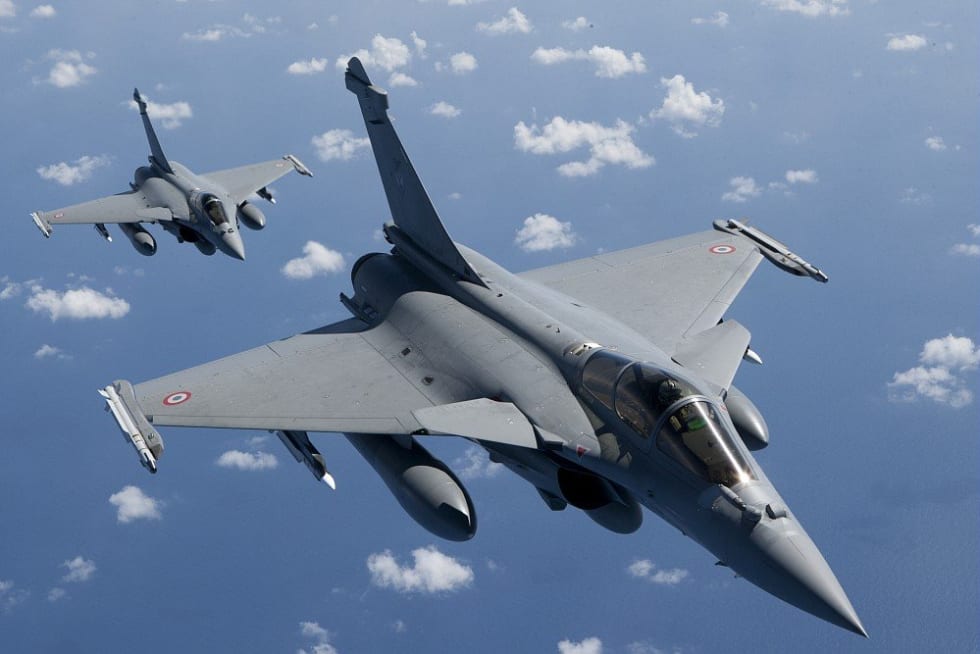China’s laser Attack on a German military aircraft over the Red Sea marks a new form of grey-zone warfare. As India faces increasing pressure on the LAC, this incident is a wake-up call with echoes of a similar Chinese provocation against Australia.

⚠️ A Red Sea Flashpoint: China’s Laser Attack Incident Shocked NATO
In early July 2025, a German surveillance aircraft flying over the Red Sea during a European Union mission — Operation Aspides — was allegedly targeted by a Chinese warship using a military-grade laser. The aircraft, tasked with protecting merchant ships from Houthi rebel threats, was forced to abort its mission and return to base in Djibouti after suffering laser-induced disruption.
Though China has not officially responded, Germany has strongly condemned the act, labeling it “irresponsible and dangerous.” The attack mirrors similar gray-zone tactics Beijing has used in recent years, and for India, it signals a threat that can no longer be ignored.
💡 Directed Energy Weapons (DEWs): The Invisible Weapon of Modern Conflict
Directed Energy Weapons use focused energy like lasers or microwaves to disable targets. These are not science fiction anymore — they are operational, stealthy, and perfect for deniable aggression.
Key threats posed by DEWs:
Blinding or disorienting pilots
Disabling aircraft sensors and avionics
Damaging surveillance drones and satellites
Causing physical harm without conventional explosives
According to the Stockholm International Peace Research Institute (SIPRI), over 30 countries are developing DEWs, but China leads in deployable systems. Its LW-30 laser platform, capable of hitting airborne targets at 25 km, is reportedly operational and mobile.
🔬 China’s Pattern: Provoke, Disrupt, Deny
This isn’t China’s first use of such tactics. In recent years, Chinese forces have:
Blinded U.S. pilots near Djibouti
Targeted commercial aircraft in the South China Sea
Used lasers to interfere with foreign naval missions
This strategy aligns with the People’s Liberation Army’s (PLA) doctrine of “Unrestricted Warfare”, which focuses on non-kinetic, deniable, and psychological tactics to weaken adversaries without triggering a conventional military response.
The Red Sea incident is simply the most recent test of international limits.
🇮🇳 India Must See the Writing on the Wall
India’s volatile border with China — especially in Ladakh, Arunachal Pradesh, and Sikkim — makes it highly vulnerable to similar laser aggression. With frequent aerial patrols and surveillance drone operations near the Line of Actual Control (LAC), the risk of laser interference is not hypothetical — it’s imminent.
India’s Vulnerable Air Assets:
270+ Su-30MKI fighters
36 Rafale jets
Heron, Rustom, and other ISR drones
DRDO’s Netra AEW&C aircraft

A laser attack could disable sensors mid-flight, blind pilots, or force aircraft to abort missions — giving China a psychological and strategic edge.
According to Indian defense analysts, DEW-based disruptions are likely to be deployed along the LAC in the next conflict escalation phase. A 2023 IAF study highlighted “non-contact energy strikes” as a Tier-1 emerging threat.
📉 India’s DEW Development: Strong on Paper, Slow on Deployment
India has initiated several DEW projects under DRDO, including:
ADITYA: A 25-kW laser for anti-drone warfare
DURGA-II: A 100-kW high-energy laser for intercepting missiles and aircraft
KALI-5000: An experimental electron accelerator for satellite shielding and pulse attacks
However, while these programs show promise, none are fully operational or deployed on the field. In contrast, China is believed to have already deployed at least five DEW systems across Tibet and Xinjiang, directly facing Indian territories.
🇺🇸 The U.S. Is Watching Silently: Why?
Perhaps the most unsettling part of this story is the lack of a strong U.S. response. Despite being Germany’s NATO ally and a global DEW leader, Washington has refrained from directly criticizing China.

Why the Silence?
Avoiding escalation during an election year
A belief that this is Europe’s issue to manage
Strategic ambiguity to conceal U.S. DEW capabilities
Testing how far China will go before triggering unified Western retaliation
But this silence sends a message — laser-based gray-zone warfare is tolerated, as long as it doesn’t cross the line into physical destruction.
For India, this means we cannot rely solely on international outrage if a similar attack happens over Arunachal or Ladakh.
🌏 Global Implication: China as the Silent Kingmaker
With incidents like this, China is testing the global order — not through war, but through aggressive technology use and strategic messaging.
“We can strike without striking.”
“We don’t need missiles to control the skies.”
“We are now setting the rules.”
This is China’s power projection without provocation — the cornerstone of what military theorists call fifth-generation warfare. While the West debates ethics, China builds and tests — and if there’s no pushback, the world slowly accepts its new dominance.
🔗 India’s Call to Action: Prepare Before It’s Our Turn
India must take decisive, multi-pronged action — technologically, diplomatically, and militarily.
🔧 Tech Upgrades:
Accelerate deployment of ADITYA and DURGA-II
Equip fighters and drones with laser shielding and warning systems
Collaborate with global partners like Israel and France for DEW integration
🛰 Strategic Surveillance:
Establish satellite-based laser detection systems
Install laser early warning radars in critical zones like Leh, Tezpur, and Siliguri
🤝 Diplomatic Pressure:
Raise the Red Sea incident in UN forums and BRICS security meetings
Push for a global treaty on the military use of lasers in international airspace
🧠 Final Thoughts: A Beam of Light or a Beam of Warning?
China’s alleged laser attack on a German aircraft was not random — it was a calculated, low-risk demonstration of power. And for India, it’s not a distant event — it’s a preview.
As global military conflict shifts into electronic and directed energy warfare, India cannot afford to wait for a headline with its own name. We must prepare, deter, and lead — because the beams over the Red Sea might soon shine over the Himalayas.
for more updates visit: The Morning Draft


